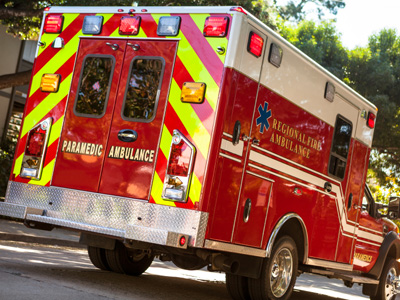This Science quiz is called 'Health - Emergency Preparedness' and it has been written by teachers to help you if you are studying the subject at middle school. Playing educational quizzes is a fabulous way to learn if you are in the 6th, 7th or 8th grade - aged 11 to 14.
It costs only $12.50 per month to play this quiz and over 3,500 others that help you with your school work. You can subscribe on the page at Join Us
Any medical emergency that is not treated immediately could result in permanent disability or even death of the victim. If you are untrained in first aid, you must remain calm and call 911. However, if you are trained, remember that once you begin administering it, you must continue until professional help arrives. If the victim is conscious, always ask for their permission to help them. If the victim is unconscious, first aid may be given without consent, however, DO NOT move the victim unless their life is in danger where they are (for example, in the middle of a street).
Steps to administer first aid:
There are 3 basic first aid steps that are known as the “CCC” or:
- Check (the victim and your surroundings)
- Call (for help)
- Care (for the victim)
First check your victim and your surroundings, then send someone to get help if there is someone else around. If no one is around, SHOUT for help to have someone come so you can have them get help. Next, check on your victim to see what their condition is. This is known as the ABCs of care or: (1) airway, (2) breathing, and (3) circulation (or pulse).
Check the victim’s airway. Is the victim breathing? Then check their pulse (their blood circulation) to see if there is a pulse. Also check for severe bleeding. Remember, it is best never to MOVE a victim if at all possible.
Once you have checked the victim’s airway, breathing, pulse and for any severe bleeding, check to see if the victim has a medical alert tag on his neck or wrist. This could give you information on how to treat the victim. Also, be sure to monitor the victim’s vital signs. If the victim is not breathing, you may have to do rescue breathing.
Rescue Breathing
- Open the airway
- Look, listen and feel for signs of breathing
- Pinch nostrils closed and give 2 slow breaths, pausing between each breath
- Check carotid artery (in neck) for pulse
- Give 1 slow breath about every 5 seconds
- Recheck pulse and breathing every minute
Often times when a medical emergency occurs, people tend to go into panic mode – not knowing what to do. If you practice the above-steps, memorize and then go over them time and time again, when an emergency occurs you can take charge until a medical professional arrives. Many schools also provide a First Aid Training Course. That course will help you to put all of these steps into practice. But even becoming familiar with the steps will make those around you safer should anything happen as you will become their lifeline.
Besides learning the above emergency procedures, there are a number of terms you should also become familiar with. Below are just a few.
Hopefully you will never be called upon to render first aid but if you are, let’s see what you can remember that will aide you and your patient.








